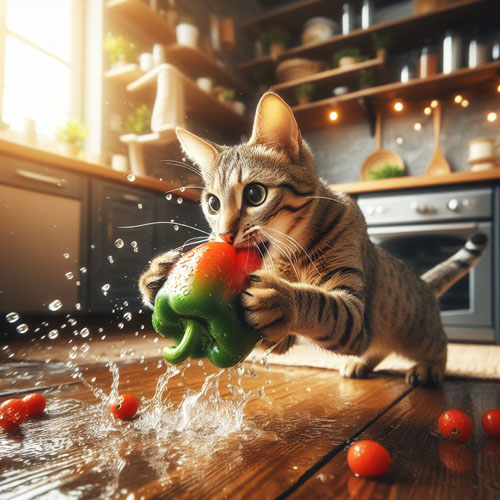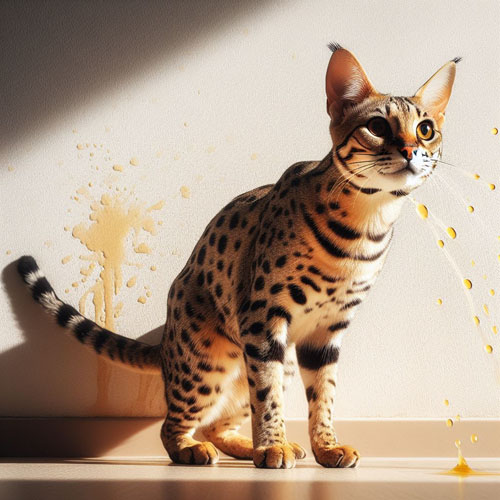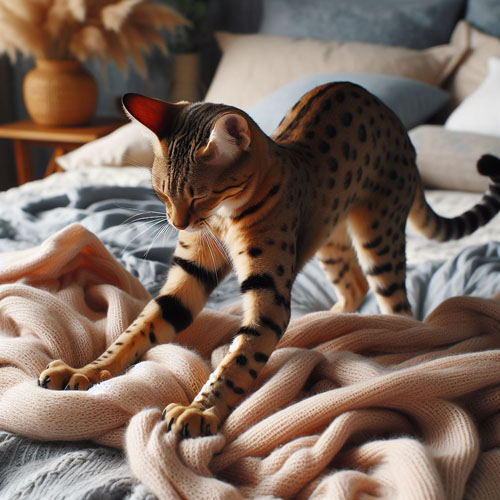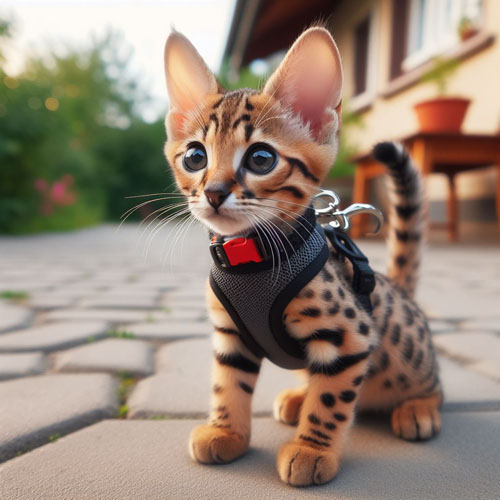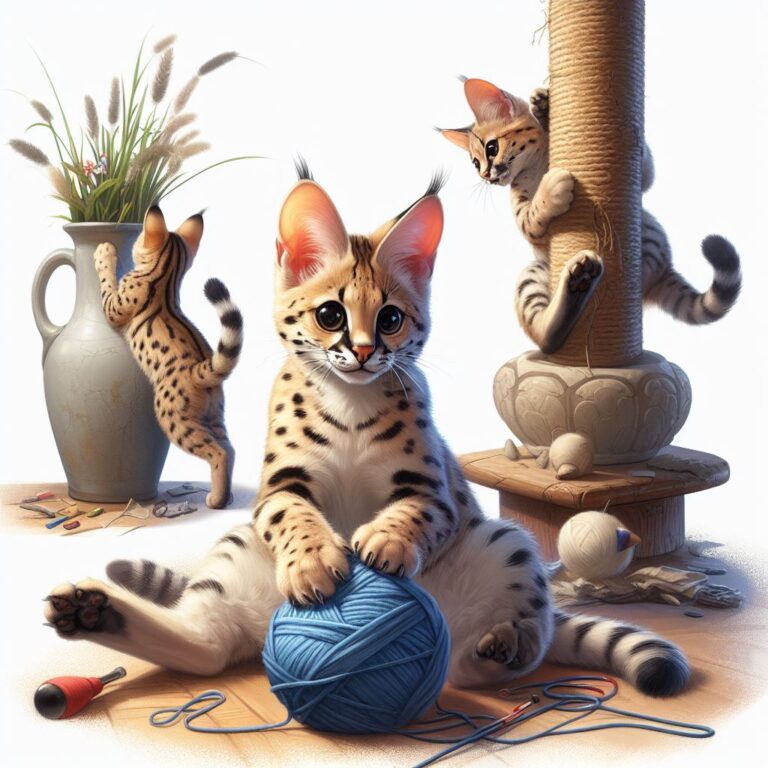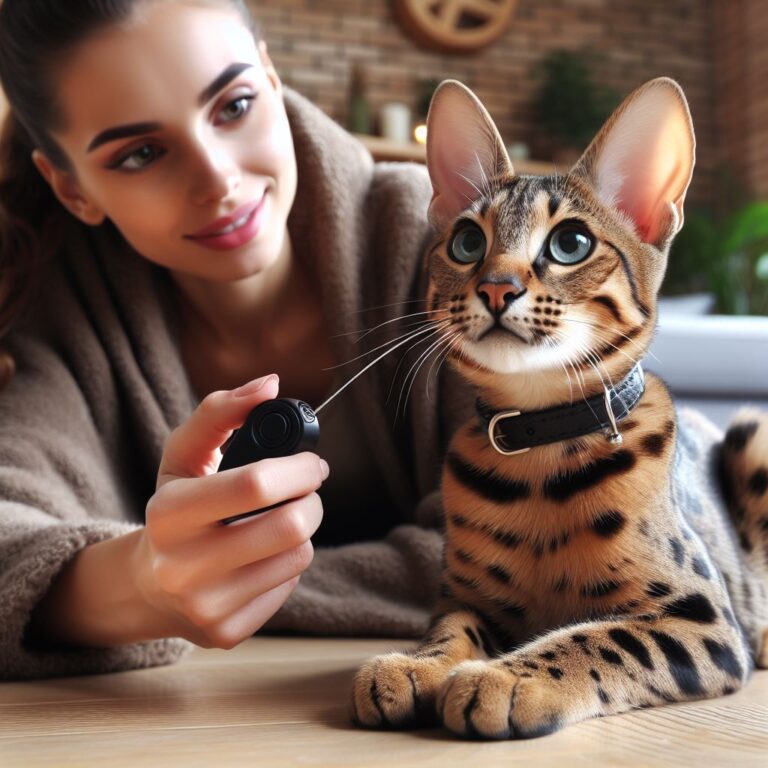Navigating the Wild Within: Unraveling the Social Dynamics of Savannah Cats
Savannah cats, with their striking appearance and wild heritage, bring a touch of the exotic into our homes. Beyond their captivating looks, understanding the social dynamics of these feline companions is essential for fostering a harmonious relationship. In this exploration, we’ll delve into the intricate world of Savannah cat social behavior, shedding light on their interactions with other cats, dogs, and humans.
Origins and Social Roots: The social dynamics of Savannah cats find their roots in the wild landscapes of Africa, where their ancestor, the serval, thrived. Servals are known for their solitary nature, only coming together during the mating season. However, the domestication process has influenced the social tendencies of Savannah cats, introducing a unique blend of wild and domestic traits.
Unlike their serval ancestors, Savannah cats often exhibit a social nature, forming strong bonds with their human companions and, in many cases, other pets in the household. This social adaptation is a testament to their intelligence and ability to integrate into family life.
Interaction with Other Cats: The social dynamics between Savannah cats and other feline companions can vary based on individual personalities, early socialization, and the specific generations of Savannah cats involved. Here are some key aspects of their interactions with other cats:
- Social Hierarchy: In multi-cat households, Savannah cats may establish social hierarchies. This hierarchy is often influenced by factors such as age, temperament, and the amount of time the cats have spent together.
- Playful Dynamics: Savannah cats are known for their playful nature, and this extends to their interactions with other cats. Play serves as a crucial element in establishing bonds and resolving conflicts, allowing them to learn each other’s boundaries and communication styles.
- Introduction Protocols: Introducing a new cat, whether it’s another Savannah or a different breed, should be done gradually. Providing a separate space for the new cat initially and allowing them to get acquainted through scent before face-to-face interactions can ease the introduction process.
- Communication Styles: Cats communicate through various means, including body language, vocalizations, and scent marking. Understanding these communication styles is crucial for interpreting the dynamics between Savannah cats and their feline companions.
Interactions with Dogs: Savannah cats, when properly introduced, can form strong bonds with dogs. However, their interactions are influenced by the individual personalities of both the cat and the dog, as well as their early experiences with each other. Here’s a closer look at their interactions with dogs:
- Early Socialization: Early exposure to dogs during the kittenhood of a Savannah cat is instrumental in fostering positive relationships. If a cat is raised with a dog, they are more likely to see them as companions rather than potential threats.
- Territorial Boundaries: Savannah cats, with their wild instincts, may establish territorial boundaries. It’s important to create spaces where both the cat and the dog feel secure and can retreat to if needed.
- Positive Reinforcement: Positive interactions should be encouraged and rewarded. This can include shared play sessions, joint feeding times, or simply allowing the cat and dog to coexist peacefully. Positive reinforcement strengthens the bond between the two.
- Supervision and Patience: Introducing a Savannah cat to a new dog or vice versa requires patience and supervision. Allow them to get used to each other’s presence gradually, and step in if there are signs of stress or discomfort.
Human Bonding: The Heart of Savannah Cat Socialization: While Savannah cats may display varying social dynamics with other pets, their interactions with humans often steal the spotlight. These feline companions are known for forming strong bonds with their human families, showcasing both affectionate and independent traits:
- Affectionate Traits: Many Savannah cats are affectionate and enjoy being close to their human companions. They may exhibit behaviors such as head-butting, kneading, and even following their owners from room to room.
- Playful Engagement: Savannah cats thrive on interactive play with their human counterparts. Engaging them in activities like fetch, puzzle games, or using interactive toys helps strengthen the bond while satisfying their need for mental and physical stimulation.
- Communication Styles: Understanding the communication cues of Savannah cats is crucial for building a strong connection. Purring, meowing, and subtle body language convey their emotions and needs, allowing attentive owners to respond appropriately.
- Independence: Despite their affectionate nature, Savannah cats also value independence. They may appreciate alone time and may not always seek constant attention, making them well-suited for individuals or families with varying schedules.
Challenges in Social Dynamics: Addressing Territorial Behaviors: While Savannah cats are generally social, they may exhibit territorial behaviors, especially in multi-pet households. Understanding and addressing these behaviors is crucial for maintaining a harmonious environment:
- Scent Marking: Savannah cats may mark their territory through scent glands on their face, paws, and tail. This behavior is natural but can be managed by providing designated scratching posts and areas for scent marking.
- Resource Guarding: Some Savannah cats may exhibit resource guarding behaviors, particularly around food and favorite resting spots. Feeding them separately and ensuring ample resources can mitigate potential conflicts.
- Introducing New Pets: When introducing a new pet, whether it’s another cat or a dog, gradual introductions and creating separate spaces initially can prevent territorial disputes. Positive reinforcement for shared activities helps build positive associations.
The Role of Generations in Social Behavior: The specific generation of a Savannah cat can influence its social tendencies. Early-generation Savannahs (F1-F3) may exhibit more wild behaviors and may require additional socialization efforts. Later-generation Savannahs (F4 and beyond) often display more adaptable and domesticated social behaviors.
- F1-F3 Savannahs: These early-generation cats may have a higher percentage of serval ancestry, influencing their behavior. They may be more independent and require patient socialization efforts to adapt to a household environment.
- F4 and Beyond: As the serval influence diminishes in later generations, Savannah cats tend to exhibit more domesticated social behaviors. They are often better suited to family life and may readily form strong bonds with both humans and other pets.
Conclusion: Nurturing the Wild Heart Within: In conclusion, the social dynamics of Savannah cats are a captivating journey into the unique interplay between their wild instincts and domestic adaptability. These feline companions bring the untamed spirit of the savannah into our homes, forming bonds that are as complex and dynamic as the landscapes of their ancestral origins.
As we navigate the intricate social behaviors of Savannah cats, it becomes clear that their ability to form connections extends beyond species boundaries. While rooted in the serval’s solitary nature, Savannah cats often defy this stereotype, establishing strong social bonds with other cats, dogs, and, most notably, their human companions.
The captivating dance of hierarchy, play, and communication among Savannah cats in multi-pet households showcases their adaptability and intelligence. From establishing territories to engaging in playful antics, these feline companions navigate the complexities of social interactions, revealing a blend of their wild heritage and domestication.
Interactions with other cats and dogs underscore the importance of early socialization and positive reinforcement. The gradual introduction of new companions, combined with patience and understanding, can lead to harmonious relationships that enrich the lives of both the Savannah cat and their fellow pets.
The human-cat bond takes center stage in the social dynamics of Savannah cats. Their affectionate traits, playful engagement, and unique communication styles create a tapestry of connection that defines the heart of the domesticated wildcat. The ability of Savannah cats to form deep, meaningful bonds with their human families is a testament to their adaptability and capacity for love.
In understanding the role of generations, we find that the dynamics shift along with the diminishing influence of serval ancestry. Early-generation Savannahs may present more challenges in terms of socialization, requiring patient efforts to integrate them into a domestic setting. In contrast, later-generation Savannahs often seamlessly blend into family life, readily embracing social bonds with both humans and other pets.
As we reflect on the social dynamics of Savannah cats, it becomes evident that these feline companions offer a unique bridge between the wild and the domestic. The challenges and joys of navigating their behaviors contribute to the rich tapestry of the human-animal connection. By embracing their individuality, respecting their wild instincts, and providing an environment that nurtures their social needs, we embark on a journey of companionship that transcends the ordinary.
In nurturing the wild heart within, Savannah cat owners become stewards of a relationship that flourishes in the delicate balance between the untamed beauty of the savannah and the warmth of domestic life. Through the patient unraveling of their social intricacies, we gain not only companionship but a window into the wild heart that beats within each Savannah cat—a reminder of the vast and intricate world they carry within their uniquely spotted coats.
